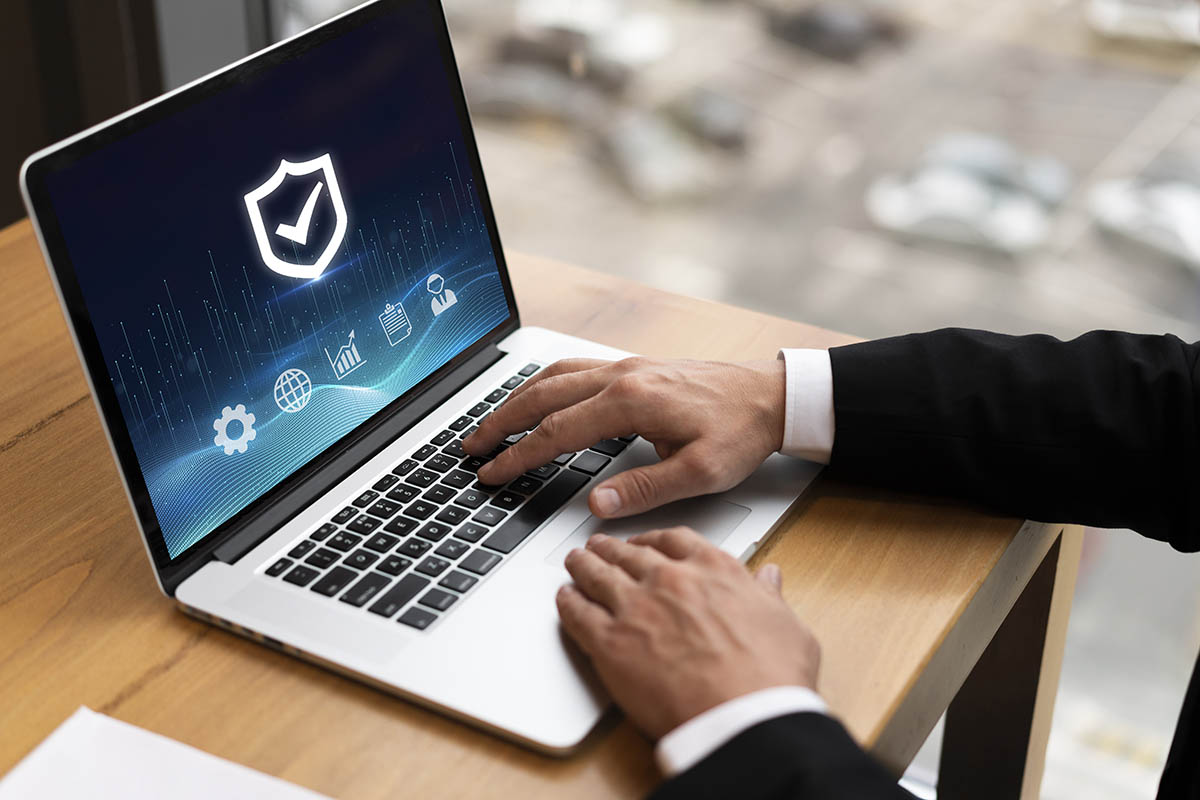Strategies to Enhance Company Security and Protect Your Business
KEY POINTS
- Implementing an automated alarm management ecosystem, like Evalink, enhances security by integrating alarm systems, AI monitoring, and professional services for round-the-clock vigilance.
- Establishing a robust cybersecurity framework involves assessing current security, developing policies, training employees, and conducting regular system updates and audits.
- Beyond digital security, securing physical infrastructure with access control systems and surveillance cameras and fostering a company-wide security culture is crucial for comprehensive protection.
In today’s interconnected world, protecting your business is about more than just installing locks and setting passwords.
It’s about adopting an all-encompassing approach, integrating physical and digital security measures to shield your enterprise from potential threats. Here are seven essential strategies to fortify your business and protect your organization from harm.
Implement an Automated Managed Alarm Management Ecosystem
The first step to safeguarding your business is implementing an automated alarm management ecosystem, such as Evalink.
This ecosystem typically includes alarm and surveillance systems, automated notifications, and professional monitoring services. But it’s not merely about installing these systems – the magic lies in their integration.
By leveraging the power of automation and artificial intelligence, an integrated alarm management ecosystem can monitor your physical and virtual environment around the clock, alerting you to any unusual activity.
It sifts through hundreds of notifications and escalates only the significant ones to the human team, thereby eliminating noise and focusing on real threats.
Establish a Robust Cybersecurity Framework
Here are some steps to follow to establish a robust cybersecurity framework:
✅Assess Your Current Security Status: Understand the current state of your cybersecurity measures. Identify any existing vulnerabilities or weak points in your network.
✅Develop a Cybersecurity Policy: Create a comprehensive policy that includes guidelines on password management, internet use, and access privileges. It should clearly define how to handle and protect customer data and other sensitive information.
✅Implement Protective Measures: Install firewalls, anti-malware, and intrusion detection systems. Use encryption for all data, particularly that which is transmitted over networks.
✅Train Your Employees: Conduct training sessions for your employees on cybersecurity best practices. They should understand the potential threats and how their actions can impact overall cybersecurity.
✅Regular System Updates: Ensure all software, applications, and systems are kept up-to-date. Regular updates often include security patches that help to protect your system.
✅Monitor Networks and Systems: Use monitoring tools to keep an eye on your networks and systems. The unusual activity could indicate a potential breach.
✅Conduct Regular Audits: Engage a third-party cybersecurity firm to regularly audit your systems. This can provide you with an unbiased view of your security posture and highlight areas for improvement.
✅Develop an Incident Response Plan: In the event of a security breach, you should have a clear response plan. This will ensure you’re prepared to act quickly to mitigate the impact.
✅Regularly Review and Adjust: The cybersecurity landscape is always changing. Regularly review and adjust your cybersecurity framework to ensure it stays effective against new threats.
Secure Physical Infrastructure
While the online world poses many risks, it’s vital not to neglect the physical security of your premises.
Besides traditional lock-and-key methods, consider implementing access control systems that leverage biometric or keycard technologies. This allows you to monitor and restrict access to sensitive areas.
Additionally, invest in quality surveillance cameras and ensure they cover all possible entry points to your premises.
Incorporate Data Backup and Recovery Plans
Even the most robust systems aren’t immune to data breaches or disasters. Therefore, it’s essential to have a data backup and recovery plan in place.
Regularly back up your data in multiple locations, offsite, and cloud platforms. Also, ensure your recovery plans are tested periodically to validate their effectiveness.
Engage in Regular Security Training and Awareness
The best security systems are only as effective as the people operating them. Hence, invest in regular training for your staff. They should know your security systems, protocols, and emergency response plans. Additionally, ensure they’re aware of evolving cyber threats and how to respond to them.
Here are some quick-fire tips to help:
- Conduct regular phishing simulations to test employees’ awareness.
- Provide concise and actionable security tips through newsletters or emails.
- Offer interactive online courses for employees to refresh their security knowledge.
- Organize workshops or webinars on emerging security threats and best practices.
- Create posters and infographics to display security reminders in the workplace.
- Encourage reporting of potential security incidents through a confidential system.
Establish a Culture of Security
Security shouldn’t be the responsibility of just your IT or security department; it should permeate your organization’s culture. This involves encouraging everyone to prioritize security in daily operations and decision-making.
Regularly communicate the importance of security and each employee’s role in maintaining it.
Monitor and Review Security Systems Regularly
Finally, as security threats evolve, so should your security measures. Regularly review your systems for potential vulnerabilities and conduct penetration testing. Monitor your logs and look for patterns or irregularities indicating an attempted breach. Staying proactive in reviewing your security infrastructure ensures you stay one step ahead of potential threats.
Company Security: Conclusion
In conclusion, enhancing your company’s security and protecting your business involves a multifaceted approach encompassing physical and digital strategies.
While there is no one-size-fits-all solution, adopting these seven strategies can help safeguard your business against potential threats and ensure the continuity and success of your enterprise.





















